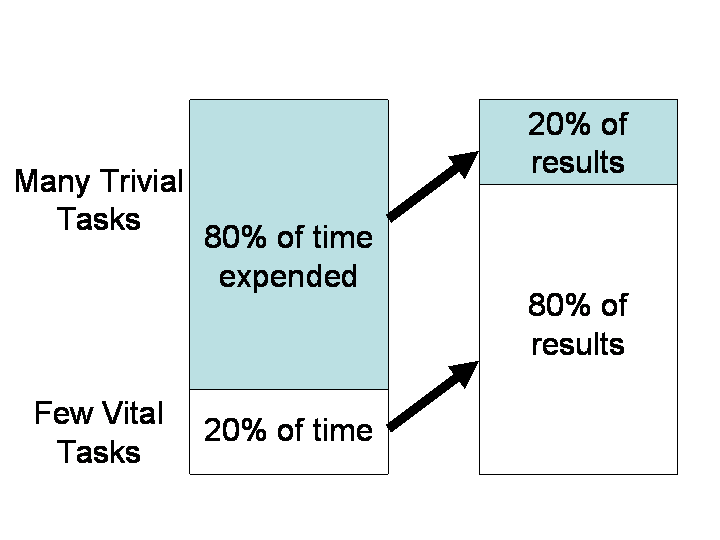- Home
- 7 Steps of Goal Setting
- How to Set Goals
How to Set Goals and Achieve Them
How to set goals is important for you, your team, or your organization. To have the greatest opportunities to excel and achieve, there must be a clear alignment between your goals and what you are doing on a daily basis.
The problem is that often the goals are on your horizon. They are not on the front-burner of your thoughts and actions and as a result it is easy to be pulled off your priorities by more immediate but less important requests and tasks.
This often means that what is most important gets relegated to the back-burner. Here I provide you with ways to make sure that you bring your goals into your daily actions. In short I provide you with:
- a guide to set the right goals that give you the best chance of achieving them.
- tools to set objectives from your goals.
- ideas on how to use these objectives as a prioritizing tool to protect your time to do what is most important to you or your team.

How to set goals that are SMART
Some of the most effective leaders are able to clarify their vision and set clear goals and objectives. Goals clarify your objectives and determine your priorities. But setting goals that cascade into objectives requires a plan!
As the saying goes:
"if you fail to plan, you plan to fail."
Having a plan that is SMART increases the likelihood of having successful teams, organizations, and individuals.
But what is SMART goal setting? SMART is an acronym for how to set goals. Your goals need to be Specific, Measurable, Achievable (or Action Based), Realistic and Time-bound.

But you need to ask yourself three questions when setting goals:
- What do you want to achieve? This identifies your wishes and desires and harnesses your focus on what you want.
- Why do you want to achieve it? By answering this question you build your personal conviction. Every goal has a price - in effort, time, or resources. Are you willing to pay the price? This question identifies your motives.
- How are you going to achieve it? For most this is where goal setting and planning falls down. People have a dream, and a conviction to achieve their dream, but the steps to get there are less clear. By having a goal setting plan with clear objectives you develop a mechanism that connects today's vision with tomorrow's reality.
How to set goals that map into your objectives
Suppose you wanted to build a house. You would most likely have detailed plans of the house that you want to build, the size of the kitchen, how many bathrooms and bedrooms, and so forth.
All this planning occurs before you lay the first stone of the foundations. While we may spend this time planning the building of a house, we don't go to the same extent in planning our lives.
Only about 2% of the population write down goals and their plans to achieve them. However, overwhelming research in this area suggests that the more concrete and specific your plans the more likely you are to achieve them.
By having a plan to achieve your goals, whether personal or corporate, you outline the objectives and milestones to goal achievement.
There is a saying in goal setting that:
"The weakest pen is better than the strongest memory."
By writing your goals and objectives these goal setting forms you clarify your targets and solidify your personal commitment to the actions.
Progressing from objective to priorities
You can make or break your career by your ability to clarify your vision, setting clear objectives, and being able to articulate and hold your priorities that reflect your vision.
It is our view that for corporations and individuals to excel and achieve their vision, there must be a clear alignment between personal/corporate goals, objectives and the behaviors at a daily level.
To do so, this involves superior skills in using your time and the ability to determine your daily and weekly tasks based on a priority system that reflects your overarching objectives and goals.
There is no doubt that this is difficult when you are faced with constant and competing demands on your time, shifting priorities from above, or unrealistic expectations.
While no ONE priority system rules, I particularly like the robustness of the Pareto Rule as a means of organizing and determining your priorities.

The Pareto principle is based on the idea that 20% of your tasks yield 80% of your results. By prioritizing with the 80 20 principle you develop time management skills that boost your effectiveness.
When daily demands are competing for your time you want to apply the 80 20 rule to the task. By triaging the task in terms of important (rather than urgent) and defending your priorities with your objectives (which should be written down) you can ensure that you are on the right side of the 80 20 rule.
Protecting your vital few from the trivial many
In my view working as a time management coach across 1000's of individuals in some of the biggest organizations on earth, it is not enough to simply know what your priorities are.
You need to go one step further and protect these priorities (or your time to do them) in your calendar in advance.
Whatever planner or organizer your use, this one step allows you to make time for the most important things in your work rather than trying to find time.
Personally, I like this personal time management software as an all encompassing tool to manage and protect my time.
Download your free 30 day trial today.
If you liked this article on how to set goals then you may also like the following:


New! Comments
Have your say about what you just read! Leave me a comment in the box below.